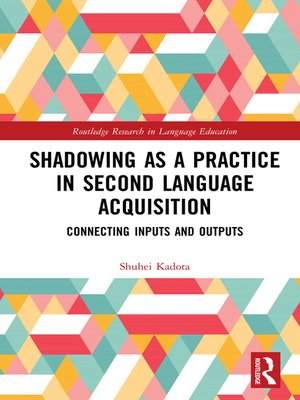Shadowing as a Practice in Second Language Acquisition
ebook ∣ Connecting Inputs and Outputs · Routledge Research in Language Education
By Shuhei Kadota

Sign up to save your library
With an OverDrive account, you can save your favorite libraries for at-a-glance information about availability. Find out more about OverDrive accounts.
Find this title in Libby, the library reading app by OverDrive.



Search for a digital library with this title
Title found at these libraries:
| Library Name | Distance |
|---|---|
| Loading... |
Shadowing is a theoretically and empirically well-examined method to develop L2 learners' listening comprehension (input effect); enhance their subvocal rehearsal mechanism in the phonological working memory for learning new words, formula, and constructions (practice effect); simulate some stages of speech production (output effect); and develop metacognitive monitoring and control by their executive working memory (monitoring effect). In Japan and some other Asian countries, shadowing is a well-recognized, popular method of learning English and Japanese as L2, and this book offers the chance for anyone new to this method to benefit. Through the research contained within this book, readers will be armed with detailed and useful accounts of the four effects above (i.e. input, practice, output, and monitoring effects) from a theoretical and empirical viewpoint.







